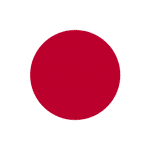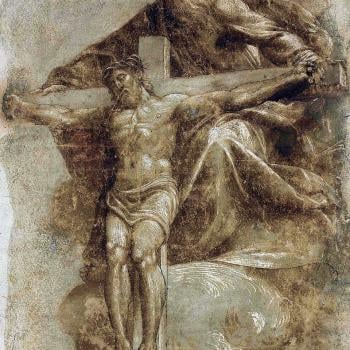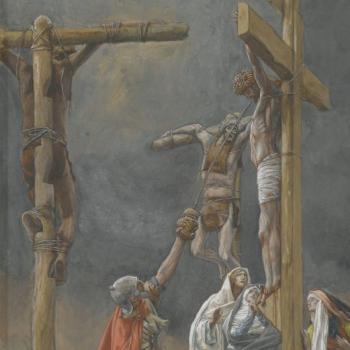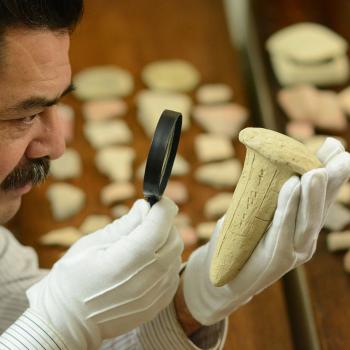Last week, I visited Nikko, Japan, one of Japan’s greatest historical and memorial sites. Nikko features Toshogu, Japan’s most extravagantly adorned shrine, and the mausoleum of Tokugawa Ieyasu, the Tokugawa shogunate’s founder. In keeping with his instructions for the year following his death, he was enshrined as a deity at Nikko by designation of the Imperial court. Ieyasu’s aim was to serve Japan from Nikko as its perpetual guardian. By most if not all standards, Ieyasu was a brilliant military and astute political leader, whose clan ruled Japan from 1603-1868.
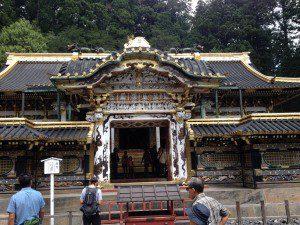
I had opportunity to reflect upon Ieyasu’s story of dramatic hardships and struggles in his early years and rise to unquestioned military and political leadership over all of feudal Japan. Still, while I witnessed many Japanese and Westerners bowing their heads in reverential respect of Ieyasu inside the Nikko Karamon Gate, I could not help but think of the Tokugawa shogunate’s horrific persecution of Christians. It is worth noting that the official ban of Christianity under the Tokugawa shogunate began four hundred years ago this year in 1614 with the signing of the Christian Expulsion Edict (See the following articles on the persecution of Christians in Japan for more information: “Destroying Japanese Christianity;” “Japanese Martyrs”).
Allegiance to the Tokugawa shogunate came to entail, among other things, the rejection of Christianity. Rather than allowing reverential respect and worship of Christ, the government made use of the fumi-e, an image such as a crucifix, which was used to reveal Christians and those sympathetic to Christianity (this link will take you to an article bearing various images, including a fumi-e of the crucifix); those who were reluctant to step on the image of the crucified Christ were identified as Catholic (the first wave of missionary activity was Catholic). Those so identified were sent away in the attempt to turn them from the Christian faith; the refusal to abandon the faith spelled torture and often execution.
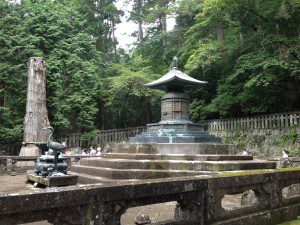
The peace that Ieyasu established in bringing an end to the conflicts between various warlords and their armies throughout Japan did not result in greater peace for Christianity. Although he abdicated the official role of shogun to his son in 1605, Ieyasu is ultimately responsible for this prohibition as he principally ruled Japan until his death in 1616: “To maintain political stability, Ieyasu issued the Christian Expulsion Edict prohibiting all Christian activity among Japanese. The shogun also limited foreign trade to Hirado and Nagasaki.”
Prior to this time, Christianity had experienced widespread growth in Japan. It is worth noting that the great warlord Oda Nobunaga who was likely the most powerful military figure in Japan until his death had often been positively disposed toward Christianity. However, things changed dramatically following Nobunaga’s demise. The leader who rose to greatest prominence at this time was Toyotomi Hideyoshi, who had 26 Christians martyred in Nagasaki in 1597. Hideyoshi feared the threat of European colonization in view of reports that Western powers used Christianity to colonize other countries (See Michael Cooper, Rodrigues the Interpreter — An Early Jesuit in Japan and China {New York: Weatherhill, 1974}, p. 160; Hideyoshi also found repugnant certain activities that some claiming to be Christians in Japan practiced; see George Elison, Deus Destroyed: The Image of Christianity in Early Modern Japan. Council of East Asian Studies, Harvard University {Harvard University Press, 1973}, pp. 54, 64; refer here to an article discussing these and related matters). Wherever Christianity went, the European powers were often if not always present, too. Hideyoshi and the Tokugawa shogunate that succeeded his rule (and which was much more thorough and sweeping in its persecution of Christians) made sure that Christianity would not be used for Western imperialistic ambitions in Japan (It is worth noting Japan-Guide.com’s presentation of the history of Christianity in Japan, including the official persecution). From 1614 to the 1640s, persecution of Christians intensified in what many would take to be unparalleled fashion (refer back to the articles noted earlier on the persecution).
While not wishing to discount the political and cultural reasons for the persecution of Christianity in Japan, I am deeply moved by the undying faith of many Christians who suffered extreme hardship as a result of the ban of Christianity at that time. Take for example the following account:
The English captain, Richard Cocks (Calendar of State Papers: Colonial East Indies, 1617-1621, p. 357) “saw 55 martyred at Miako at one time … and among them little children 5 or 6 years old burned in their mother’s arms, crying out: ‘Jesus receive our souls’. Many more are in prison who look hourly when they shall die, for very few turn pagans”. We cannot go into the details of these horrible slaughters, the skilful tortures of Mount Unaen, the refined cruelty of the trench.”
I often hear that the blood of the martyrs is the seed of the church (the original source for the phrase is often attributed to Tertullian’s Apologeticus, chapter 50). In Japan’s case, I believe it is still left to be seen if the blood of the martyrs is the seed of the church, if the statement is taken to mean that persecution and martyrdom always gives rise to dramatic numerical growth. The Tokogawa shogunate’s measures were very effective in suppressing Christianity. To date, Christianity in Japan has not experienced anywhere near the growth of the faith in places like China or South Korea; it may be argued that Christianity in Japan has never experienced anything like the kind of growth that had occurred in the years preceding the sweeping ban. Certainly, Japan officially affirmed the freedom of religion with the establishment of a democratic government in the post-World War II era. Moreover, prior to the establishment of a democratic system, Christianity had received respite from persecution after the demise of the Tokugawa shogunate during the Meijo era (though the Meiji government banned Christianity until 1873; in that year, the government provided formal protection). Still, while I have heard reports in a few circles of significant recent numerical growth of Christianity in parts of Japan, time will tell if such reported growth, if true, is the result of native-born Japanese converting to the faith, the immigration of Christians from such places as Korea and the Philippines, or other factors (Refer here to an article discussing the past persecution and Christianity and religion in general today in Japan). An encouraging sign has been the engagement and responsiveness to the church’s compassionate, sacrificial giving and growing unity in such areas as the Tohoku region in response to the horrific tragedy bound up with the major earthquake and tsunami in 2011.
Beyond these events, every Sunday that I have worshipped with Japanese Christians here in Japan, presently and in past years, I have marveled at their resilience and simple faith in Christ as a religious minority population. Their faithful witness and that of their Christian ancestors in Japan speak volumes to me. Their vitality and the events surrounding their tribulations lead me to ask the following questions: First, would I have been faithful as a Christian in Japan if I were Japanese, or if I were a missionary to Japan, under the reign of the Tokogawa shogunate? Given the level of consumer Christianity in places like the United States today, would I abandon Jesus if severe trials come, mocking him with questions like “What have you done for me lately?” Second, in light of how politics and religion often go together in negative ways to hinder the flourishing of Christianity, how can I work with others to distinguish and promote the politics of Jesus (which I believe in their respective and distinctive ways the late Dietrich Bonhoeffer of Germany and Uchimura Kanzo of Japan sought to emulate)? Jesus’ politics leads to human flourishing in the public square, yet without capitulating to Caesar (and other emperors) in various forms, come what may. Along related lines, how can others and I make sure that Jesus and his cross are the stumbling block to people, in keeping with Paul’s rightful claims in 1 Corinthians 1, and not my or others’ erroneous pontifications and faulty practices? Third, how can I work with other leaders of various religions to promote tolerance and peace in a world often marked by religious and political upheaval today? Christianity has not only been victimized by persecution, including at the hands of other religions (it is my understanding that a Buddhist monk named Konchiin was responsible for drafting the “Expulsion of all missionaries from Japan” document), but has also been bound up with the victimization of adherents of other religions in the world at large. Take the Spanish Inquisition for example. In other words, Christians have had blood on their hands, too. In this light, may the blood of the Christian martyrs become the seed of the church and the seed of greater tolerance and love the world over for people of all paths.
I have hope that better days are approaching. Just yesterday, the Japanese Buddhist priest under whom I studied Buddhism years ago in Japan told me that he was thankful for Japanese who have become Christians; he believes they have done so based on firm conviction and informed choices rather than ignorance. This priest has been so gracious to me, as have my other Buddhist friends and colleagues here and in the States. I can only hope that I always respond well to their generosity, not based on mere obligation but profound gratitude and mindfulness.
Beyond the need to respond graciously and thoughtfully to Buddhists and Christians alike, I wonder how many Japanese—Buddhists, Christians and those of other faith traditions—give thought to why so many Christians refused to capitulate to the Shogun’s demand; instead of renouncing their faith, they chose to suffer horrific pain, shame, and death. I often wonder myself why and how they could and would endure such persecution. This Sunday morning, I thought about this matter as I sat and listened to a sermon on 2 Timothy 4 by a young Japanese pastor. He spoke of Paul’s unswerving commitment in the face of persecution and impending death at the hands of Caesar. He also spoke of Demas, whom Paul says abandoned him because he loved this world (2 Timothy 4:10). May those of us who claim to be Christians, no matter where, love Christ so much that we would never renounce our faith. After all, as Paul says, those who seek to live godly lives in Christ Jesus will be persecuted (2 Timothy 3:12). In the end, those who fight the good fight of faith like the Apostle will receive the crown of righteousness on the day of the Lord Jesus’ appearing for which his people long (2 Timothy 4:6-8):
For I am already being poured out as a drink offering, and the time of my departure has come. I have fought the good fight, I have finished the race, I have kept the faith. Henceforth there is laid up for me the crown of righteousness, which the Lord, the righteous judge, will award to me on that Day, and not only to me but also to all who have loved his appearing. (2 Timothy 4:6-8; ESV)
Just as Paul’s life and the lives of many Japanese Christians in the past were poured out, may the lifeblood of those of us who claim Christ be poured out every day as the seed of the church in life and death. May it result in greater tolerance and love all over the world, as we proclaim Jesus is Lord.


